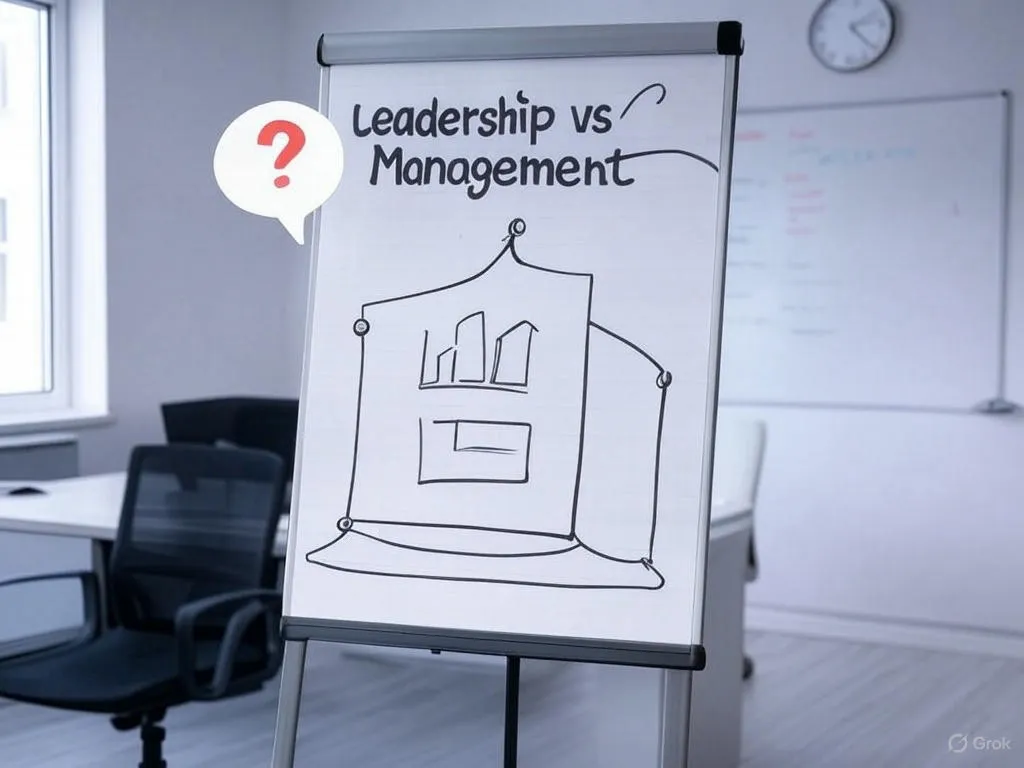Leadership vs Management: the Key Differences
Leadership and management are two fundamental concepts in any organization, but they serve distinct roles. While leadership is about setting a vision and inspiring people to achieve it, management focuses on executing processes efficiently to ensure stability and success. Both play a crucial role in achieving organizational goals, and understanding their differences is essential for anyone aspiring to be a leader or a manager.
What is Leadership?
Leadership is the art of inspiring and guiding individuals or teams toward a shared vision. True leaders focus on innovation, motivation, and long-term growth. They prioritize people, foster trust, and encourage creativity. Leadership is often associated with strategic thinking, problem-solving, and the ability to navigate uncertainty. Great leaders are not just authoritative figures; they are visionaries who influence others to strive for excellence.
Key Characteristics of Leadership
What is Management?
Management involves planning, organizing, and coordinating resources to meet objectives efficiently. Managers focus on maintaining order, ensuring productivity, and implementing strategies effectively. Unlike leadership, which is about inspiring people, management is about ensuring that work is done efficiently and systematically.
Key Characteristics of Management
Key Differences Between Leadership and Management

| Aspect | Leadership | Management |
|---|---|---|
| Focus | Vision and long-term goals | Execution and short-term objectives |
| Approach | Inspires and motivates | Plans and organizes |
| Decision Making | Strategic and future-oriented | Tactical and immediate |
| Risk-Taking | Encourages innovation and change | Minimizes risk and ensures stability |
| People Handling | Builds relationships and empowers | Controls and directs teams |
| Objective | Drives transformation and adaptability | Maintains efficiency and consistency |
The Role of a Leader
A leader’s primary role is to establish a vision and guide their team toward achieving it. Leaders inspire, motivate, and encourage innovation. Some of the key responsibilities of a leader include:
The Role of a Manager
Managers are responsible for executing the vision set by leaders. They oversee daily operations, ensure efficiency, and ensure that employees meet organizational goals. Some of the key responsibilities of a manager include:
Can a Person Be Both a Leader and a Manager?
Yes! The best professionals incorporate both leadership and management skills. A successful organization requires the visionary approach of leadership combined with the structured execution of management. While leaders set the course, managers ensure a smooth journey. Striking a balance between these roles creates an environment of growth, innovation, and efficiency.
Some individuals naturally excel at both, while others develop these skills over time. A great manager with leadership qualities can inspire teams while ensuring that tasks are completed efficiently. Similarly, a strong leader with management abilities can turn visions into actionable plans.
Why Leadership and Management Must Work Together
Organizations thrive when leadership and management functions complement each other. Leadership without management can result in unstructured ideas, while management without leadership can lead to stagnation. When combined effectively, they create a dynamic work environment that drives success.
Leadership and Management in the Modern Workplace
In today’s fast-paced business environment, organizations require both effective leadership and strong management to navigate challenges and seize opportunities. Modern businesses need leaders who can inspire innovation and managers who can execute strategies effectively. Here’s how companies can integrate both roles successfully:
Conclusion
Leadership and management are both crucial for the success of any organization. While leadership focuses on vision, inspiration, and transformation, management ensures stability, efficiency, and execution. A thriving organization needs both, as leadership without management may lack structure, and management without leadership may hinder growth. Whether you are an entrepreneur, a corporate professional, or a business owner, developing both leadership and management skills is essential to achieving long-term success.




